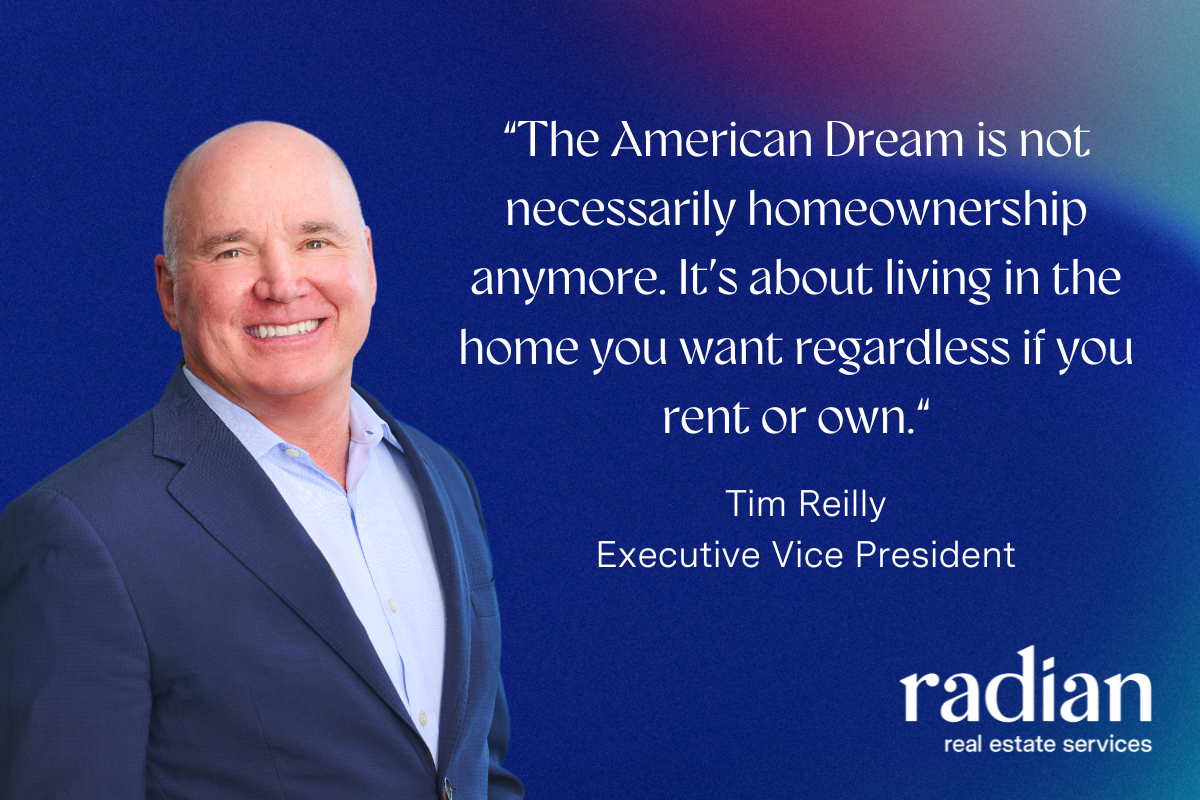August 14, 2019
C-Suite, Asset Manager, Investor, Industry News, Secondary Market, Securitization, Servicing, Single Family Rental SFR2019 Trends in the Single-Family Rental Market
We often think of rental properties as urban apartments and high-rise buildings. However, according to a 2018 Freddie Mac report, the reality is that 58% of America's 43 million renter households live in single-family housing – comprised of 1-4 unit properties, including detached homes, townhomes, and 2-4-unit properties. The total valuation of single-family rentals (SFRs) is estimated at well over $4 trillion, compared to $3.7 trillion for the traditional 5+ unit rental properties.
While small (and very small) investors have historically dominated the single-family rental (SFR) market, the recession brought institutional investors into the market. Following the financial crisis, investors and banks began to sell single-family homes at distressed prices, which attracted institutional investors. Although the distressed investment opportunity is largely finished, there still remains significant institutional interest in this asset class.
More than ten years post-crisis, the number of SFR properties owned by aggregators continues to grow as institutional investors seek opportunities to diversify away from other real estate sectors. As of today, less than 2% of SFR properties in the US – roughly 300,000 – are owned by institutional investors. However, the number of homes owned by SFR aggregators has increased year over year. Certain companies opportunistically believe that they can continue to grow, eventually owning or managing hundreds of thousands of homes across the country.
Certain trends indicate this market will continue to grow.
Increase in rental households
Unlike the pre-crisis housing market, the residential market is now on an upward trajectory because of supply-and-demand dynamics, rather than credit. Throughout the financial crisis and the recovery to date, the number of owner-occupied households has remained stable, while rental households have increased. This may be largely due to the barriers millennials face in purchasing a home – including student loan debt, rising costs, slow wage growth, and low housing inventory. Millennials also appear have a different attitude about homeownership than previous generations.
Millennials more comfortable renting
Many US millennials (born 1980-96) have a different view of homeownership compared to their parents' generation. Millennials witnessed the price falls of the financial crisis and may therefore be more comfortable with the idea of renting and the flexibility it offers. This means a large sector of the population is renting for longer – even as they marry and have children. As millennials form families, they are more likely to seek single-family homes in which to raise them.
Streamlining portfolio management with technology
Managing thousands of individual homes is more difficult than a single apartment building, which is a fundamental reason the single-family sector did not institutionalize earlier. Technology is now being used to help solve this problem to more easily manage large portfolios of individual homes.
Strong securitization market
As institutional investors began accumulating large SFR portfolios, a form of securitization was introduced to the market in 2013, pooling loans backed by single-family rentals. SFR securitizations have a hybrid structure with characteristics of both commercial mortgage-backed securities (CMBS) and residential mortgage-backed securities (RMBS). Fifty-one single-borrower SFR securitizations have closed since 2013.
The volume of SFR securitizations steadily continues. Eight transaction securitizations closed in 2018, most of which were refinance activity of prior debt and several large term loans. We continue to see new lender entrants into the SFR lending space, including Rothesay Life, a London-based company that entered into a term loan with Invitation Homes. 2019 securitization volume is tracking on par with last year, with two transactions having closed early in the year and several others in the pipeline; investor demand remains strong, showing the SB SFR space as appetizing.
Today, the market is comprised of smaller securitizations, warehouse activity and iBuyer facilities, which have taken off in recent years. These iBuyers represent a new type of player in the SFR space, focused on buying and reselling quickly.
.png?rev=85d2748183c344378e2417c08f2efb1e&h=800&w=1200&la=en&hash=58A74A07860BB808A26302C1FD1A03C3)
More Than a Provider: Find the Underwriter That Grows with Your Agency
Title insurance claims have increased in recent years, demonstrating the importance of an experienced title underwriter. Learn more about various factors to evaluate when selecting an underwriter to add to your agency's network of providers.
.png?rev=82091bd603814828a7aa8f73c7b87b97&h=800&w=1200&la=en&hash=7F4311FB35EF2B8F11352FD7C9370B35)
4 Strategies to Help Real Estate Investors Shrink Closing Costs
Getting to the closing table can be exhausting and expensive. Real estate investors shouldn't miss out on untapped potential for savings. Learn about four actionable strategies you can implement at closing that may help you save.

The $638 Million Reason to Choose Your Title Company Wisely
The title company real estate investors choose can play a critical role in their investments. Making an informed decision on this often-overlooked aspect can help impact their long-term success. Learn more about what to consider when searching for a title company.

Why Buying a Home Still Makes Sense in Today's Market: A 2025 Perspective
In today's real estate landscape, potential homebuyers might hesitate to enter the market. However, despite current challenges, several compelling reasons make homeownership an attractive option. With proper planning and understanding of available options, buying a home in 2025 can be a smart investment in your future.

Help Safeguard Property Transactions: A Deep Dive into Seller Impersonation Fraud
Understand the threat of seller impersonation fraud in real estate transactions. Help safeguard against these fraudulent activities by learning how scammers may use sophisticated methods to impersonate property owners and steal sale proceeds, warning signs to watch for, and potential protective measures including thorough identity verification, title insurance, and settlement services.

Housing Valuation Panel Recap: Is it Time to Sell or Can Values Rise?
In the ever-evolving real estate market, insights from industry leaders can help provide valuable insights for investors.

Single-Family Rental Market Insights: What Investors Need to Know for 2025
The recent IMN Single-Family Rental (SFR) West Forum in Scottsdale, Arizona provided valuable perspectives on the current and future state of the SFR market. Industry leaders shared compelling insights that demonstrate the resilience and evolving nature of this space.

Beyond the Rate Drop: Helping to Future-Proof Your Lending Strategy
The recent drop in interest rates may lead to an influx of purchase and refi volume for lenders. With this shift on the horizon, learn more about positioning yourself to meet customer needs and help borrowers at scale through proper use of technology and innovative solutions.

Homebuying Trends in the United States
Discover the state of homeownership in the US, including the significant disparities across racial and ethnic lines and the challenges that homebuyers face. Learn about the importance of addressing these disparities and creating more equitable pathways to homeownership for building wealth and ensuring accessibility for all.

Debunking 7 Common Mortgage Myths
The homebuying process can be exciting, but it can also be overwhelming, especially when it comes to mortgages. There's a lot of information out there, but not all of it is accurate. In this article, we debunk some common mortgage and PMI myths to help borrowers make better informed financial decisions.
